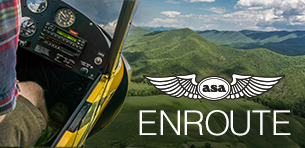Experienced pilots know their aircraft inside and out, knowing the function of even very minor parts. Here are some of the most important parts of an airplane as described by Bob Gardner in The Complete Private Pilot:
…Blog Posts
Today’s post is inspired by a cartoon from flight instructor Mark Rowe.
However unlikely you would encounter this scenario in real life, these overtly specific rules are in place to guarantee safety for all aviators. Let’s take a look at the specifics, which are detailed in our …
I hope everyone had a great weekend and got a chance to spend some time looking over Thursday’s questions, let’s see how you did.
1. When do the four forces that act on an airplane in equilibrium?
A—During un-accelerated flight.
B—When the aircraft is accelerating.
To control yaw! I know you have been anxiously awaiting the answer to last week’s teaser question, and there it is: answer A. The purpose of the rudder is to control yaw about the vertical axis of the aircraft. As promised here are a few more questions to test your
…In the previous week, the Learn to Fly Blog has covered the four forces in flight. To recap, these are lift, weight, thrust, and drag. These forces are key in aircraft aerodynamics and will become extremely important throughout your flight training, particularly when learning how to control the aircraft. In
…This is the second part of this two part series on the four forces of flight, where we’ll introduce thrust and drag. You can find our intro to lift and weight here. William Kershner’s The Student Pilot’s Flight Manual
…On Monday I posted two questions about medical certificates Let’s see how you did.
1. A Third-Class Medical Certificate was issued to a 19-year-old pilot on August 10, this year. To exercise the privileges of a Recreational or Private Pilot Certificate, the medical certificate will expire at midnight on
A—August


